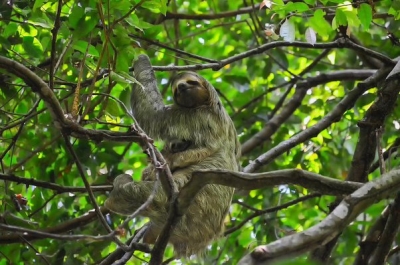
In protecting and preserving rainforests, we are merely preserving our future. The year is 2070. Kids are on an expedition to a part of the Amazon rainforest and are clueless when their teachers throw around words such as “Spider monkey” and “Harpy eagle”. What else could they be, for, they have never heard about these erstwhile creatures that became extinct well before their time? Back to the present. Today, in 2022, did you know that about 17 % of the Amazon rainforest, the largest in the world, has been destroyed over the last five decades? It is time to wake up and smell the forest fire.
Rainforests are home to some of the most biologically diverse and important ecosystems in the world more than half of Earth’s plants and animals are found in them. June 22 was World Rainforests Day, and doesn’t it make sense that one of our most important natural resources has a day dedicated to it? In a bid to raise awareness and encourage action to protect the world’s rainforests, the first World Rainforest Day was celebrated on June 22, 2017, by the Rainforest Partnership, an international non-profit.
Fear factor
So, how serious is the threat to rainforests? In an interview, Gabriel Labbate, head, United Nations Environment Programme’s (UNEPS) Climate Mitigation Unit, shed some light on the issue. “There are worrying signs that some of these systems may be close to tipping points. For example, an article I read in the last six months documented clear signs that the Amazon was losing resilience. The Amazon is like a gigantic recycler, a water pump. Water may be recycled up to five times as it travels from the southeast to the northwest of the Amazon. When rain falls on trees and vegetation, part of it is absorbed, and part of it goes back up into the air following evapotranspiration. You stop this water pump and the whole system may transform into a savannah because there is not enough water left to sustain a tropical forest. There will be a cascade of impacts following the disappearance of an ecosystem like that.”
While Labbate has spoken specifically about the Amazon Rainforest, the danger to other rainforests is just as real. Many of them have suffered from heavy logging for their hardwoods, slash-and-burn cultivation, and forest fires, throughout the 20th century. Consequently, the area covered by rainforests around the world is shrinking, and large numbers of multiple species are being driven to extinction
Almost 90% of West Africa’s rainforests have been ravaged, as have two-thirds of Madagascars. In fact, the situation turned so dire that several countries, most specifically Brazil, declared deforestation a national emergency, and it was instrumental in slowing down the damage from 2004 to 2012. deforestation reduced by about 80 % in the country.
While it is arduous to completely reverse the effects of rainforest destruction, here are a few steps you can take to tackle the problem:
- Start by reading more about it and teach others about the importance of the environment and how they can help save rainforests.
- Try and restore damaged ecosystems by planting trees on land where forests have been cut down.
- Encourage people to live in a sustainable manner, one that won’t harm the environment.
- While not all of us have the resources financial or otherwise to protect) rainforests and wildlife on a large scale, it is possible to support organisations that help minimise damage to the environment. The time is ripe. Spread the word.
Picture Credit : Google




